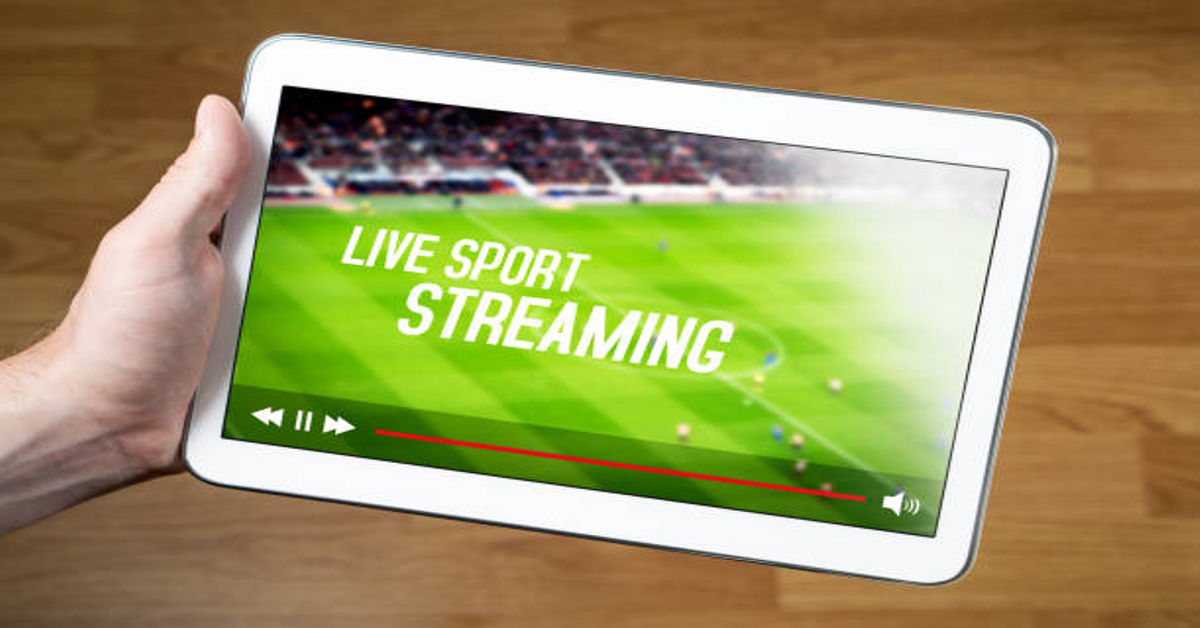The digital entertainment landscape has evolved faster than ever before, with millions of viewers worldwide shifting from traditional cable TV to online streaming platforms. Amid this transition, a variety of unofficial and often unlicensed websites emerged, one of the most discussed being CrackStreams. The name became well-known among sports enthusiasts for offering free live sports streams — including boxing, football, basketball, MMA, and more.
However, while CrackStreams gained massive popularity for accessibility and convenience, it also raised serious concerns about legality, ethics, user safety, and quality of service. Understanding how such platforms operate, the risks they pose, and the legitimate alternatives available today is essential for anyone who enjoys live sports online.
This comprehensive article will unpack the entire concept — what CrackStreams was, why it attracted millions of visitors, its legal and technical implications, its eventual decline, and what safe and ethical streaming options exist today.
1. What Is CrackStreams?
CrackStreams was an online streaming website that became known for providing free live streams of popular sporting events. Users could access major events such as UFC fights, NBA games, NFL matches, and even international football tournaments without paying for official subscriptions. Unlike legitimate services that operate under broadcasting rights agreements, CrackStreams typically did not hold the legal licenses required to distribute this content.
Because of this, the platform frequently faced shutdowns, domain bans, and reappearances under different names or URLs. It functioned as part of a larger ecosystem of mirror and proxy sites that aimed to bypass copyright enforcement mechanisms.
For users, the attraction was simple: free, convenient access to live sports without paywalls. But beneath the surface, this model created a range of legal, ethical, and cybersecurity concerns — both for the operators and the viewers.
2. How CrackStreams Operated
Unlike paid services that host and stream their own legally licensed content, CrackStreams worked as a link aggregator. It typically gathered links from other sources — some of which were peer-to-peer or third-party streaming servers — and embedded them in one place. This structure meant that the website itself did not necessarily host the sports content but facilitated easy access to streams from elsewhere.
Technically, CrackStreams functioned using the following workflow:
| Step | Description |
|---|---|
| 1. Event Scheduling | Before a live sports event, CrackStreams posted links or countdown timers indicating when streams would go live. |
| 2. Link Aggregation | The site collected and embedded links from external sources that carried live feeds of the event. |
| 3. Stream Playback | Users clicked on the event and watched via an embedded player (often through third-party streaming services). |
| 4. Mirror Updates | When the site was taken down, mirrors or alternate URLs appeared to redirect users back to new versions. |
This model allowed rapid reappearance after each shutdown, contributing to its longevity despite enforcement actions. However, it also meant the content often varied in quality, and the embedded sources sometimes contained harmful scripts or ads designed to capture user data.
3. Why CrackStreams Became So Popular
The appeal of CrackStreams was undeniable. It offered sports fans what official broadcasters often failed to deliver — free and instant access to premium events.
Key Reasons for Its Popularity:
- Cost Avoidance:
Sports broadcasting subscriptions can be expensive, especially for international audiences. CrackStreams removed that financial barrier. - Accessibility:
No login, no setup, no installation — users could stream directly from their web browser. - Coverage Variety:
The platform aggregated streams across multiple sports, appealing to both casual and hardcore fans. - Convenience:
Events were organized neatly by date and category, making navigation easy. - Lack of Regional Restrictions:
Many legitimate streaming services restrict access based on geography. CrackStreams, by contrast, was globally accessible through mirrors and VPNs.
Despite its convenience, however, the model undermined legal broadcasters, content creators, and the sports industry’s revenue streams. Moreover, it carried substantial personal risk for viewers.
4. The Legal and Ethical Issues Surrounding CrackStreams
The most critical aspect to understand is that CrackStreams and similar sites operate outside the boundaries of copyright law. Sports broadcasts are protected under intellectual property rights, and only licensed distributors can legally stream these events.
When a site streams or links to such content without authorization, it violates those rights. This makes CrackStreams and its mirrors technically illegal in most jurisdictions.
For viewers, the risk varies depending on national law — in some countries, streaming copyrighted content may result in legal penalties or warnings, while in others, enforcement focuses primarily on the operators rather than individual users. Still, accessing pirated streams creates exposure to:
- Copyright Infringement Liability: Watching or sharing unlicensed streams may violate local copyright laws.
- Malware and Phishing: Many illegal streaming sites carry hidden malware, malicious ads, or phishing links.
- Data Theft: Fake pop-ups and deceptive ads can trick users into revealing payment information or login credentials.
- Unstable Access: Because CrackStreams often went offline, users had to chase multiple URLs, leading to increased risk.
Ethically, using such services undermines the very sports ecosystem fans rely on. Licensing revenue funds athlete salaries, event production, and broadcast quality. Piracy erodes this revenue base.
5. The Rise and Decline of CrackStreams
CrackStreams’ visibility peaked around the late 2010s and early 2020s when it gained massive attention on social platforms and forums. However, it soon attracted legal scrutiny from major sports organizations and copyright enforcement bodies.
Periodic domain seizures, takedown orders, and ISP blocks began to restrict access. Like many piracy platforms, it operated in a “whack-a-mole” cycle — disappearing under one name and resurfacing under another. Over time, these disruptions, combined with improved official streaming options, reduced its prominence.
Today, while clones and mirrors continue to appear under similar names, none of them provide the stability or safety users expect. Legitimate streaming services have largely replaced the need for such risky alternatives by offering affordable, high-quality coverage.
6. Security and Privacy Risks for Users
Streaming from unverified sources like CrackStreams can introduce multiple layers of cyber risk.
Common Risks:
| Type of Risk | Description | Impact |
|---|---|---|
| Malware Infections | Hidden scripts embedded in streaming players or pop-up ads can install viruses or spyware. | Compromised personal data and system damage. |
| Phishing Scams | Fake “Play” buttons or surveys designed to steal personal information. | Identity theft or unauthorized financial access. |
| Data Tracking | Some sites collect browsing data without consent. | Privacy invasion or targeted malicious ads. |
| Unsecured Networks | Streams often use insecure connections (HTTP instead of HTTPS). | Exposure to interception or data manipulation. |
| Fake Downloads | “Download this player” pop-ups may install harmful software. | Risk of ransomware or trojans. |
Because users are often unaware of these dangers, they may assume free streaming is harmless. However, the cybersecurity cost can far exceed what a legitimate subscription would have been.
7. How CrackStreams Affected the Sports Industry
The presence of illegal streaming platforms like CrackStreams has significant economic repercussions for sports organizations and broadcasters. Every unauthorized viewer represents a potential loss in legitimate subscription revenue.
Industry Impact Overview:
| Affected Area | Nature of Impact |
|---|---|
| Broadcasters | Loss of ad and subscription revenue reduces reinvestment capacity. |
| Athletes and Teams | Reduced income from licensing deals and performance bonuses. |
| Fans | Decline in broadcast quality and fewer production investments. |
| Sponsors | Lower brand exposure reduces sponsorship attractiveness. |
| Government and Regulators | Loss of tax revenue from legal streaming services. |
Piracy may seem victimless, but in reality, it redistributes financial losses across the entire sports ecosystem — from camera operators and commentators to the players themselves.
8. Legal and Safe Alternatives to CrackStreams
Today, numerous legal streaming services provide extensive sports coverage, often at affordable rates and with much higher quality. These services respect copyright laws, ensure stable access, and protect user data.
Here’s a look at some safer alternatives:
| Platform | Coverage Focus | Highlights |
|---|---|---|
| ESPN+ | UFC, NHL, college sports, soccer | Affordable monthly plans; HD streaming; official rights holder. |
| DAZN | Boxing, MMA, global sports | Dedicated fight sports platform with flexible pricing. |
| Paramount+ | NFL, UEFA Champions League, college games | Combines sports and entertainment content. |
| Peacock (NBC) | Premier League, WWE, NFL highlights | Integrates live sports with on-demand content. |
| Hulu + Live TV | Broad U.S. sports coverage via ESPN, FS1, CBS, etc. | Streamlined, legal access with DVR features. |
| YouTube TV | Multi-network sports access | Clean interface, DVR, accessible on all devices. |
| Sling TV / FuboTV | Live channels, regional sports networks | Flexible packages tailored to user preference. |
These platforms not only comply with legal standards but also deliver better user experiences — high-definition streaming, reliable servers, and the peace of mind that comes with legitimacy.
9. Comparing CrackStreams vs. Legal Platforms
| Feature | CrackStreams | Legal Streaming Services |
|---|---|---|
| Cost | Free | Subscription-based, often affordable |
| Legality | Unlicensed (illegal in most regions) | Fully licensed |
| Quality | Variable, often poor or unstable | HD/4K streams |
| Safety | High malware and phishing risk | Secure, verified |
| Reliability | Frequent shutdowns | Consistent, customer support |
| Ethics | Violates copyright | Supports sports ecosystem |
The comparison is straightforward: while CrackStreams offered free access, the trade-off in risk, instability, and legality far outweighs any benefit.
10. Educational and Ethical Perspective
From an educational standpoint, CrackStreams highlights an important issue: the tension between accessibility and intellectual property rights. Many users turned to such sites because they felt official subscriptions were overpriced or fragmented across too many services.
This suggests that part of the long-term solution to piracy lies in creating more affordable, consolidated, and user-friendly legal streaming platforms. When legitimate options are fair and accessible, users have fewer incentives to seek out illegal ones.
Ethically, viewers should recognize that paying for content sustains the sports they love. Every legal subscription supports production crews, athletes, broadcasters, and the overall quality of the entertainment experience. In contrast, using unauthorized streams indirectly contributes to economic harm and security threats.
11. How to Identify Illegal Streaming Sites
In today’s internet, dozens of CrackStreams look-alike sites still appear. Here are clear signs that a site is unlicensed or unsafe:
- It offers premium events for free.
- There’s no “About” or company information page.
- It uses mirror domains (e.g., crackstreams.me, crackstreams.is).
- Pop-ups, redirects, and fake “Play” buttons appear frequently.
- The site requests permission to install extensions or software.
- It uses “.to” or other offshore domains with no privacy disclosure.
Learning to identify these signs helps protect both your privacy and device security.
12. How to Stay Safe While Streaming Online
Even when using legitimate services, maintaining cybersecurity hygiene is essential. Follow these best practices:
- Use official apps/websites: Download only from verified app stores.
- Avoid suspicious links: Do not follow unknown URLs posted on forums or social media.
- Enable antivirus and firewall protection: Detect and block malicious activity.
- Use HTTPS-only connections: Secure data transfer from streaming servers.
- Be cautious with VPNs: Use them ethically to protect privacy, not to bypass licensing restrictions.
Your digital safety depends not only on what you watch but where and how you watch it.
13. The Future of Sports Streaming Beyond CrackStreams
As technology advances, the sports streaming landscape continues to evolve rapidly. Artificial intelligence, adaptive bitrate streaming, and digital rights management (DRM) have improved quality and accessibility. Subscription bundles are becoming more flexible, and advertising-supported free tiers are emerging to balance cost and access.
In the coming years, more sports leagues are expected to launch direct-to-consumer platforms, offering fans localized packages with affordable rates — effectively replacing the demand once met by illegal services.
The goal is clear: make legitimate access so convenient and reasonably priced that piracy becomes unnecessary.
14. The Broader Lesson of CrackStreams
The story of CrackStreams is a cautionary tale in the digital age. It shows how demand for accessibility can drive users toward convenience at the expense of legality and safety. It also underscores the responsibility of both industries and consumers.
For the industry, the lesson is to innovate, reduce friction, and ensure global affordability. For users, it is to understand that ethical choices sustain the entertainment ecosystem. The freedom to watch and share content comes with the responsibility to respect the creators’ rights.
Ultimately, CrackStreams represents a transitional moment — between the old, rigid broadcast model and today’s flexible, accessible streaming era.
Conclusion
CrackStreams once symbolized the “free” frontier of sports streaming, giving fans around the world instant access to live games. But the reality behind the convenience was complex — legal violations, cyber threats, and unstable access made it unsustainable. The evolution of legitimate streaming services now provides the same accessibility in a secure, ethical, and higher-quality way.
The best approach for modern viewers is not to chase risky, temporary sites but to support legitimate services that uphold the sports industry and ensure the safety of every user. The streaming world has matured — and so should our choices.
FAQs
1. Is CrackStreams legal to use?
No. CrackStreams provided unlicensed live streams of copyrighted sports content. Accessing or distributing such content can violate copyright laws in many jurisdictions. Always use official, licensed streaming services.
2. Is it safe to watch sports on CrackStreams mirrors?
No. Many mirrors contain malware, pop-up ads, and phishing schemes that can compromise your device or personal information. Legal streaming platforms are the only safe option.
3. Why does CrackStreams keep changing URLs or domains?
Because the site often gets taken down for copyright violations. To evade detection, operators frequently launch new domains under different names — making them unstable and unreliable.
4. Are there any completely free and legal sports streaming options?
Yes. Some networks offer limited free access, such as Pluto TV’s sports channels, Tubi Sports, or league-specific highlights on YouTube. These are ad-supported but entirely legal.
5. What’s the best legal alternative to CrackStreams?
Services like ESPN+, DAZN, Paramount+, and FuboTV provide extensive, high-quality sports coverage with legal rights, stable access, and enhanced safety — making them far superior choices for any viewer.











